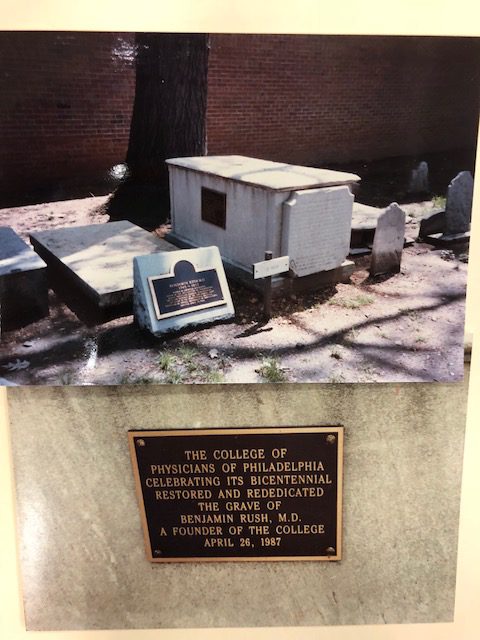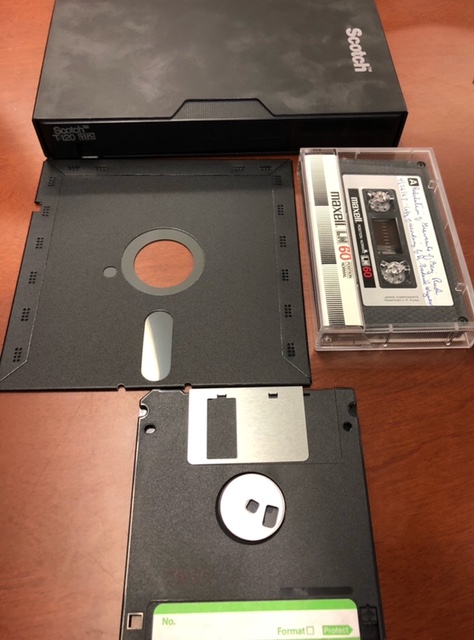– by Carly Schanock, Archives intern
As a graduate student in the Library and Information Sciences program at Drexel, you learn a lot about theory and read many articles about archives and archival work from those who have experience in the field. I couldn’t help but be jealous of those with practical experience in the archival field as there is only so much you can learn from reading. I’d previously done work with digital archives so I wanted an opportunity to work with physical materials. I had visited the Mütter Museum one weekend but hadn’t realized at the time that they also had a library and archives. It was during one of my graduate courses at Drexel that I had to interview an archivist. I discovered the Historical Medical Library and ended up touring there for the class. Luckily, just a short time later I received an email about an archives internship available at the Historical Medical Library and I jumped on the chance. I began my internship at the Historical Medical Library in January 2018.
I had my choice between two collections and I ended up going with institutional records from the Francis Clark Wood Institute for the History of Medicine (Wood Institute). During the first few days I was to get to know the records by carefully going through each of the 25 boxes, which looked like a daunting task (I can’t tell you how good it felt later when I went through the collection and got rid of the records we did not need. It borders on euphoric.) as I wasn’t used to physically going through an archival collection. I usually dealt with archival materials after they had been processed and they were digitized.
When the average person thinks of institutional records, things that may come to mind are office memos, progress reports, and employment records. I, too, thought that because these were “just” institutional records I wouldn’t come across anything interesting, but I was proved wrong. Some of the interesting things that I came across were records related to the rededication of the grave of Dr. Benjamin Rush and a visit from then president Ronald Regan (both are pictured below).
The collection of the Wood Institute records that I went through primarily contained records from the 1980s but also had some from the late 1970s and the early to late 1990s. It consisted of various forms of media ranging from physical documents to VHS tapes. There were four large boxes which held manuscripts that were later published in Transactions and Studies, but luckily since they were already published we did not have to keep these draft revisions. I had to fight the urge to dance on my way to the trash can to throw out these boxes. The VHS tapes were actually later found in the stacks, where the records are kept, towards the end of my processing of this collection. There were also an oversized items that were used in a brochure for the Wood Institute. This collection proved that there is no such thing as “just” institutional records. Sometimes when you go through a collection like this, you might just find some interesting materials that you hadn’t expected to find.
Throughout processing the collection, I created six separate series to organize the records into: Administration, Director’s Files, Conferences and Lectures, Publications, Transactions and Studies, and Media. I chose these six series because it would make the contents of the collection more easily navigable for future researchers. For a few of the series I also had to create subseries to further organize the records within the series. One of the largest series contained within the boxes was the Director’s Files, which includes things like a subseries of files relating to research grants and a subseries that contained the meetings of the Advisory committees amongst other advisory committee records. Another larger series was Conferences and Lectures, which had a subseries containing conference papers from multiple conferences held by the Wood Institute at the College of Physicians of Philadelphia. A third larger series was Media, which contained nearly 100 floppy disks of both 5 1/4” and 3.5” sizes, about five cassette tapes, and five VHS tapes. I hadn’t seen or held floppy disks, cassette tapes, or even VHS tapes since my childhood (not to date myself or anything), so it was exciting for me to see them in this collection. There were various other smaller series, such as Administrative, Publications, and Transactions and Studies. I was able to get the collection down from 25 or so boxes to 9 boxes and an oversized file.
From this internship I was able to experience a side of archival work that had previously been unknown to me. A fan of a more hands-on approach, I was happy to be able to physically go through a collection. I also got to integrate the technological side that I was used to when I created a finding aid for this collection as we created the inventory list on Excel, transformed it into Encoded Archival Description (EAD), and then uploaded it onto Archive Space. This opportunity to work with an archival collection allowed me to put into practice what I learned in theory. It was a valuable experience that will allow me to use the skills I gained from it on future archival collections. Once my internship ends, I admit that I will be bragging and showing the finding aid I created to friends, family, and anyone else I can get to listen to me talk about this experience.
You can view the finding aid for the Records of the Francis Clark Wood Institute here.




